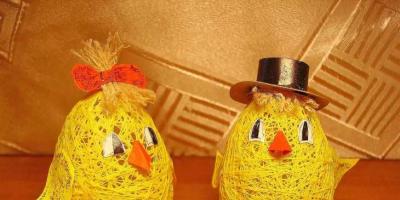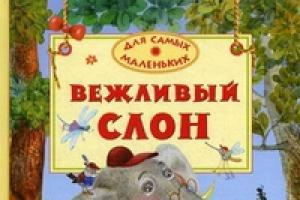There are quite a few holidays dedicated to the Most Holy Theotokos in Orthodox Christianity. However, there is a main one among them - this is the Assumption. It is celebrated on August 28.
The Dormition of the Virgin Mary is included in the list of the 12 most important Orthodox holidays. This day ends the two-week Assumption Fast, dedicated to the Mother of God. The holiday of August 28 is associated with many folk traditions, signs and church rules, which every believer should know about.
What is the Dormition of the Virgin Mary
The full name of the holiday is the Dormition of our Most Holy Lady Theotokos and Ever-Virgin Mary. This is one of the twelve Orthodox holidays. The twelfth holidays are dogmatically closely connected with the events of the earthly life of the Lord Jesus Christ and the Mother of God and are divided into the Lord's (dedicated to the Lord Jesus Christ) and the Theotokos (dedicated to the Mother of God). Dormition - Theotokos feast.
The holiday, which is celebrated in the Russian Orthodox Church on August 28 according to the new style (August 15 according to the old style), was established in memory of the death of the Mother of God. Christians are led to it by the two-week Dormition Fast, comparable in severity to Great Lent. It is interesting that the Assumption is the last twelfth holiday of the Orthodox church year (ending on September 13 according to the new style).
What can you eat on the Dormition of the Virgin Mary?
On August 28, the feast of the Dormition of the Mother of God, if it falls on Wednesday or Friday, you can eat fish. In this case, breaking the fast is postponed to the next day. But if the Assumption falls on other days of the week, then there is no fasting. In 2016, the Feast of the Assumption is not a fast day.
Events of the Dormition of the Virgin Mary
Everything we know about the death of the Mother of the Lord Jesus Christ is drawn from Church Tradition. In the canonical texts we will not read anything about how and under what circumstances the Mother of God departed to the Lord and was buried. Tradition is one of the sources of our dogma, together with the Holy Scriptures.
From the New Testament we learn that the Savior, crucified on the cross, asked his closest disciple - the Apostle John the Theologian - to take care of Mary: “Seeing the mother and the disciple standing here, whom he loved, he said to His Mother: Woman! Behold, your son. Then he says to the disciple: Behold, your Mother! And from that time on this disciple took Her to himself” (John 19:26-27). After the crucifixion of Christ, the Mother of God, together with the disciples of her Son, remained in prayer and fasting. On the day of the Descent of the Holy Spirit on the Apostles (Pentecost), she also received the gift of the Holy Spirit.
In written monuments starting from the 4th century, we find references to how the Mother of God lived further. Most authors write that she was bodily caught up (that is, taken) from earth to heaven. It happened like this. Three days before her death, Archangel Gabriel appeared to the Mother of God and announced the upcoming Assumption. At that time she was in Jerusalem. Everything happened exactly as the Archangel said. After the death of the Most Pure Virgin, the apostles buried her body in Gethsemane, in the same place where the parents of the Mother of God and her husband, Righteous Joseph, rested. Everyone was present at the ceremony except Apostle Thomas. On the third day after the burial, Thomas wanted to see her coffin. The coffin was opened, but the body of the Mother of God was no longer in it - only her shroud.
What can you do on the Feast of the Dormition of the Blessed Virgin Mary?
For our ancestors, this holiday coincided with the harvest, so the last sheaf was dressed up in a dress and carried around the villages with songs. This sheaf was called dozhinka. After such processions, the sheaf had to be placed under the icon. And then they held a very large feast, at which they sang, danced in circles, and prepared beer and mead. The next day will be the Nut Spas, so it is customary to collect nuts and prepare various winter preparations on the Most Holy Day.
Since this holiday is also the end of the Dormition Fast, that is, almost anything is possible. But it’s better to exclude fatty and meaty foods. If the Assumption fell on Wednesday or Friday, then the breaking of the fast was postponed to the next day.
You can work at home and in the garden, make rolls, ferment cabbage, and do housework. Some villagers believe that it is necessary to leave a few spikelets on this day, as this will help increase the harvest next year.
Dormition of the Blessed Virgin Mary, signs
On August 28, the people celebrated harvesting, which meant the end of the harvest. At the beginning of the day, they tried to consecrate those fields where wheat and rye grew.
This holiday falls at the end of summer, so the weather conditions on this day were used to judge what autumn would be like:
- if a rainbow appears in the sky, the autumn days will be warm;
- if the weather on Assumption is clear and sunny, then autumn will be rainy and cloudy;
- a lot of cobwebs - early, frosty and little snow winter;
- if frosts set in after the Assumption, then autumn will be very long;
- observed how the water behaves. If you don’t worry, then the autumn will be windless, and there will be no snowstorms in the winter;
- if on the day of the Assumption it is very foggy, you should expect a large harvest of mushrooms, and the warm time will still please people a little;
- frost on plants on August 28 promises a very short autumn season, and frosts will come very soon.
The Day of the Dormition of the Blessed Virgin Mary is an important event from the stay of the Mother of God on earth, which is not in the Holy Scriptures. This phenomenon is described in detail by the Traditions of the Saints.
The Feast of the Dormition of Our Most Holy Lady Theotokos and Ever-Virgin Mary is celebrated on August 28, as a memory of the miraculous ascension of the Mother of God into Heaven to meet the Son, Father and Holy Spirit.
Historical information about the wonderful day
Non-believers do not understand the joy of believers celebrating this holiday. "Dormition" means both death and sleep. For followers of Jesus, death is the first step to meeting Christ. The Gospel of John speaks in the name of Jesus that those who believe in Him will be given eternal life.
On August 28, the day of the Dormition of the Most Holy Theotokos, the Orthodox world remembers the wonderful events in the life of the Holy Virgin that preceded her death and after it.
Jesus, while on the cross in terrible torment, did not forget about His Mother. At His request, the Apostle John took upon himself further care of the Mother of God. Virgo lived in his parents’ house until she met the Archangel Gabriel. God's messenger announced to the Mother of God the joyful news for Her that in 3 days Her life on earth would come to an end.
During this time, the Blessed Virgin tidied up the room and expressed only one wish to God - to see the apostles who remained on earth, scattered throughout the earth, before leaving.
Miraculously, by the power of the Holy Spirit, the faithful disciples of Jesus gathered at the bedside of the Mother of God who was awaiting her death. The Savior Himself appeared near the bed of the Mother of God and received her soul, hugging her like a baby with His hands.
Before leaving for Heaven, the Most Pure Virgin, with great humility and faith, asked her Son to grant a blessing to all people who revere her as the Mother of God.
As soon as her soul was in the hands of the Son, the singing of angels filled the room. The coffin with the body of the deceased Mother of God was taken to the Garden of Gethsemane for burial in a cave.
Apostle Thomas did not have time to say goodbye to the Blessed Mother; he arrived three days after her burial. All this time the apostles prayed at the Holy Tomb.
At the great request of Thomas, the apostles moved away the stone of the cave to allow the faithful disciple of Jesus to say goodbye to His Mother. Great surprise and joy awaited the apostles - the tomb turned out to be empty. The Most Holy Theotokos was taken up into heaven by angels
The day of the departure of the Mother of God into Heaven has become clear proof that the Kingdom of Heaven awaits faithful worshipers in spirit and truth, and thousands of believers pray daily before the icon dedicated to this day.
Dormition of the Blessed Virgin Mary
Prayers to the Mother of God
The akathist to the Dormition of the Blessed Virgin Mary recalls the last days of the Mother of God and Her miraculous ascension.
Reading the prayer to the Most Pure Mother of God, which can be said not only at the Dormition of the Mother of God on August 28, but also with any petition, Orthodox believers ask:
- help to pass the fast with dignity;
- mentor youth;
- keep the girls pure until the wedding;
- give mothers wisdom to be quiet and affectionate;
- deliverance for captives;
- provision for widows;
- keep travelers on the road.
Read about the Mother of God:
What is the meaning of the holiday
Secular understanding is not given to understand the joy of the Orthodox on the day of the death of the Virgin of God. It is possible to unite two opposite concepts - joy and death - by accepting as true the words of the Apostle Paul that death is a temporary sleep until the soul is resurrected.
Important! The celebration of the Dormition of the Blessed Virgin Mary is an ode to eternal life, when, according to the word of God, people who died in faith will enjoy eternity, where there will be no grief and tears.
About other Mother of God holidays:
On the Assumption, people rejoice and thank Jesus Christ, the Mother of God, for the great mercy to enter the Kingdom of God.
How did the Holy Virgin deserve the worship of people?
The earthly life of the Mother of God cannot be called ordinary from the very beginning. Even from infancy, little Mary was destined for the mission of becoming a great personality in the history of mankind - to give earthly life to God the Son.
 Icon of the Blessed Virgin Mary
Icon of the Blessed Virgin Mary
Childhood
The Virgin's parents were pious people. The family of father Joachim originated from the royal family of David, the genealogy of mother Anna began with the high priest Aaron.
Being just a baby of three years old, Mary came with her parents to the temple, and was introduced to that part of the Jerusalem temple, access to which was strictly limited even for clergy. Even before the girl was born, her parents dedicated her to God.
The Holy of Holies was the repository of the Ark of the Lord, in which the following were kept under the strictest control:
- stone slabs with the 10 commandments carved on them, given to the prophet Moses by God on the mountain;
- manna from heaven falling from the sky during the exit of the Jewish people from Egypt;
- Aaron's rod, which blossomed while resolving a dispute among the clergy.
Even the high priest entering the Holy of Holies was required to undergo a rite of purification, and the little girl was brought there without observing traditions, for she did not need purification according to Her holiness.
The girl’s life at the temple was filled with prayer, work and handicrafts. She spun flax and wool and embroidered with silk ribbons. Her favorite pastime was sewing priestly clothing. The dream of the young artist was one thing - to serve God.
During her 11 years in the temple, Mary turned into a pious girl, submissive to God, who vowed to remain virgin and belong only to God.
Girlhood time
According to temple laws, girls over a certain age were not allowed to live at the temple; they were obliged to get married.
In order not to break the law and to respect the vow given by the Virgin to God, the high priest Zechariah came up with a special plan. The girl was betrothed to Joseph, an old man aged 80.
The family tree of the carpenter Joseph began with the family of King David. His family strictly observed all Jewish traditions and laws. The Holy Scriptures were especially revered.
Joseph had special character qualities such as:
- modesty;
- sincerity;
- determination;
- nobility;
- peacefulness;
- honesty.
Joseph’s fear of God became the main indicator when choosing a husband for the Holy Virgin, for the Lord saw the carpenter’s heart and entrusted him with the girl. Joseph knew about Mary's vow and promised to respect and support it.
From his first marriage, the carpenter had six children, 4 sons and 2 daughters. Joseph's youngest daughter lived with him and Mary. Both girls became close, like sisters.
According to the word of the Archangel Gabriel, the Virgin Mary received the news of the birth of Jesus, and Joseph was aware that in the womb of the Virgin there was a child from the Holy Spirit.
Earthly life of the Virgin Mary
Born in Bethlehem, Jesus, to whom the Mother of God gave a piece of her flesh, needed care; the pious Virgin provided for him.
The Mother of God was given the honor of witnessing the first miracle performed by Jesus on earth. At the request of the Most Pure Virgin, Her Son turned water into wine at the wedding feast, thereby saving the groom’s family from shame.
Knowing the Divine power of the Son, the Mother of God until now had never asked Him for anything, remaining all the time in obedience and reverence. However, the current situation forced the Mother of God to ask her son for the poor. Jesus, seeing Her sincere attitude towards people, bestows mercy.
In all her travels and sufferings, the Mother was with Jesus, sharing with Him dangers, persecutions, wanderings, but the main pain awaited Mary ahead.
Standing at the feet of the crucified Son, she heard mocking cries and saw all the mockery of His body, but she endured everything in silence, believing in the promises of God. After the crucifixion of Jesus, the Mother of God transferred her care to the apostles, becoming their Mother.
It is said that St. Mary's main attire was modesty and simplicity. Everyone who saw the Mother of God admired her love for people and beauty. The quiet, modest Mother of God remains to this day an example of purity and nobility of soul. Always benevolent, ready to help, respecting her elders, the Mother of Jesus, who lived on earth for about 72 years, left all the women of the earth a vivid example of inheritance.
 Appearance of the Archangel to the Virgin Mary
Appearance of the Archangel to the Virgin Mary
What is prohibited to do on the Assumption
Since the eleventh century, the Russian Church has defined the day of the departure of the Mother of God from earthly life as a joyful day, therefore sad thoughts and melancholy should not visit the minds of the Orthodox.
Important! This day is prohibited for swearing, showing anger, starting a quarrel, and using foul language.
Squabbles during this day can bring scandals to the family for the whole year.
True believers, observing the second commandment of Christ about loving your neighbor, must learn to live, thanking God with joy, throughout their lives.
The Assumption Fast, which is celebrated on August 14-27, helps to cleanse yourself of sin, leave behind all grievances and unforgiveness, and come to this holiday with joy and forgiveness.
Popular beliefs
According to popular beliefs, the earth is called mother. At the Assumption it was forbidden to trample the ground with bare feet.
It is also prohibited to “stab” it with sharp objects. Because of disrespect for the land, people were afraid to be left without a harvest the next year.
Walking in the dew threatened with many illnesses.
Nowadays it is believed that uncomfortable shoes worn on a holiday can bring problems for the whole year.
Worn-out, not entirely new shoes at this celebration are not a sign of poverty, but an expectation of comfort until the next holy holiday.
Housewives try to prepare for the holiday in advance so as not to cut anything later; they even break bread products with their hands.
It should be remembered that the Orthodox Church has a negative attitude towards signs and superstitions, so you should not give them much importance.
What needs to be done on this day
A joyful event is celebrated by visiting church and attending a solemn service.
Before the service begins, you must light a candle and pray to bless all relatives and loved ones.
This is a very important day when the Mother of God hears prayers for children in a special way. When visiting church, you should ask:
- health for kids;
- a good share for unmarried children;
- so that they do not depart from the faith;
- for help to overcome worldly temptations.
The memorable day of the heavenly departure of the Mother of God gives a happy family life to those couples who marry during the holiday.
Housewives are not prohibited from making preparations, especially pickling cucumbers, tomatoes, and collecting vegetables left in the garden.
This time is favorable for forest hikes to pick mushrooms, viburnum, and also harvest pears and apples.
What signs are important for next year
Weather signs of this day are usually passed down through generations.
- Old people say that since the Assumption the sun gets ready to sleep.
- The warmth of this day predicts a cold autumn.
- The rain will be the herald of dry autumn days.
- A warm autumn will be predicted by a rainbow appearing in the sky on August 28.
- An abundance of cobwebs portends a frosty winter with little snow.
- August 28 does not celebrate the day of death, but the great promise of eternal life.
Watch a video about the Feast of the Dormition of the Virgin Mary
In this article we will talk about the Holiday Dormition of our Most Holy Lady Theotokos and Ever-Virgin Mary.
What does the word "Assumption" mean?
"Assumption"- this is an outdated word. Translated into modern Russian it means “death, demise.”
What is the Dormition of the Virgin Mary
The full name of the holiday is Dormition of our Most Holy Lady Theotokos and Ever-Virgin Mary. This is one of the twelve Orthodox holidays. The twelfth holidays are dogmatically closely connected with the events of the earthly life of the Lord Jesus Christ and the Mother of God and are divided into the Lord's (dedicated to the Lord Jesus Christ) and the Theotokos (dedicated to the Mother of God). Dormition - Feast of the Theotokos.
The holiday, which is celebrated in the Russian Orthodox Church on August 28 in the new style (August 15 in the old style), was established in memory of the death of the Mother of God. Christians are led by a two-week Dormition Fast, a severity comparable to Great Lent. It is interesting that the Assumption is the last twelfth holiday of the Orthodox church year (ending on September 13, new style).
When is the Assumption of the Virgin Mary celebrated?
The Feast of the Dormition of the Blessed Virgin Mary is celebrated on August 28 in the new style. He has 1 day of forefeast and 9 days of afterfeast. Forefeast - one or several days before a major holiday, the services of which already include prayers dedicated to the upcoming celebrated event. Accordingly, post-feast days are the same days after the holiday.
What can you eat at the Dormition of the Virgin Mary?
On August 28, the feast of the Dormition of the Mother of God, if it falls on Wednesday or Friday, you can eat fish. In this case, breaking the fast is postponed to the next day. But if the Assumption falls on other days of the week, there is no topost. In 2016, the Feast of the Assumption is a non-fasting day.
Events of the Dormition of the Virgin Mary
Everything that we know about the death of the Mother of the Lord Jesus Christ is gleaned from Church Tradition. In the canonical texts we will not read anything about how and under what circumstances the Mother of God departed to the Lord and was buried. Tradition is one of the sources of our faith, together with the Holy Scriptures.
From the New Testament we learn that the Savior, crucified on the cross, asked his closest disciple, the Apostle John the Theologian, to take care of Mary: Seeing the mother and the disciple standing here whom he loved, he said to His Mother: Woman! Behold, your son. Then he says to the disciple: Behold, your Mother! And from this time this disciple took Him for himself (John 19:26-27). After the crucifixion of Christ, the Mother of God, together with the disciples of her Son, remained in prayer and hypostasis. On the Day of the Descent of the Holy Spirit to the Apostles (Pentecost), she also received the gift of the Holy Spirit.
In written monuments starting from the 4th century we find references to how the Mother of God lived further. Most authors write that she was bodily caught up (that is, taken) from earth to heaven. It happened like this. Three days before her death, Archangel Gabriel appeared to the Mother of God and announced the upcoming Assumption. At the time she was in Jerusalem. Everything happened exactly as the Archangel said. After the death of the Most Pure Virgin, the apostles buried her body in Gethsemane, the same place where the parents of the Mother of God and her husband, the righteous Joseph, rested. Everyone was present at the ceremony except Apostle Thomas. The third day after the burial, Thomas wanted to see her coffin. The coffin was opened, but the body of the Mother of God was no longer in it - only her shroud.
History of the celebration of the Dormition of the Virgin Mary
Reliable information about the history of the Feast of the Assumption begins only at the end of the 6th century. Most church historians believe that the holiday was established under the Byzantine Emperor Mauritius, who reigned from 592 to 602. Most likely, before this time, the Dormition was a local, that is, non-church, holiday in Constantinople.
Icon of the Dormition of the Virgin Mary
Dormition of the Blessed Virgin Mary. Beginning of the 13th century, Novgorod. State Tretyakov Gallery, Moscow
Traditionally, icon painters depict the Mother of God in the center of the image - she lies on her deathbed, with the weeping apostles to her sides. A little behind the bed stands the Savior with the soul of the Mother of God, depicted as a swaddled baby.
In the 11th century, an expanded version of the iconography of the Assumption, the so-called “cloud type,” spread. We can see it, for example, in a fresco from the Church of Hagia Sophia in Ohrid in Macedonia. The upper part of such a composition depicts the apostles flying to the deathbed of the Mother of God on the clouds. The oldest example of a “cloud Assumption” in Russia is an icon from the early 13th century, which comes from the Novgorod Desyatinny Monastery. The upper part of the icon depicts a blue semicircular segment of the sky with golden stars and figures of angels carrying away the soul of the Mother of God. Now this image is kept in the Tretyakov Gallery.
Often, when placing the Virgin Mary, icon painters depict one or more burning candles, which symbolize a prayer to God.
Divine service of the Assumption
The Feast of the Dormition has one day of pre-feast and 9 days of post-feast. Forefeast - one or several days before a major holiday, the services of which already include prayers dedicated to the upcoming celebrated event. Accordingly, post-feast days are the same days after the holiday.
The celebration of the holiday takes place on September 5th in the new style. The Dormition of the Mother of God is preceded by a two-week Assumption Fast. It lasts from August 14 to August 27.
There is a special service for the burial of the Mother of God. It is performed in the same way as the Matins service on Holy Saturday; During this time, the 17th kathisma is read - “Blessed are the Immaculate.” Currently, the Rite of Burial of the Mother of God can be seen in many cathedral and parish churches on the second or third day of the holiday. The service begins with an all-night vigil. With great praise, the clergy of the temple comes out with the image of the Mother of God lying in the middle of the temple; burns cense to her, and then carries her around the temple. After this, all worshipers are anointed with oil (blessed oil). Finally, litanies (a series of prayer requests) and dismissal (blessing of those praying as they leave the temple at the end of the service) are read.
The verses of the Assumption were written in the 5th century by Patriarch Anatoly of Constantinople. In the 8th century, Cosmas of Mayum and John of Damascus wrote two canons for this holiday.
Prayers of the Dormition of the Virgin Mary
Troparion of the Dormition of the Virgin Mary
At the Nativity you preserved virginity, at the Dormition you did not abandon the world, the Mother of God, you reposed in the life, Mother of the Being of the Life, and through Your prayers you delivered our souls from death.
Translation:
At the birth of Christ, You, Mother of God, preserved your virginity and did not leave the world at His death; You have crossed eternal life, Mother of Life, and through Your prayers You deliver our souls from death.
Kontakion of the Dormition of the Virgin Mary
In the prayers of the never-sleeping Mother of God and in the intercessions, the immutable hope/coffin and the mortification of uncontrollability: like God, the Mother of the Belly, left the belly in the womb, Who dwells in the ever-virgin.
Translation:
The Mother of God, with tireless prayers and unchanging hope in intercessions, the grave and death were not restrained, for He brought Her to life, as the Mother of Life, Who dwelt in Her eternally virgin womb.
The Majesty of the Dormition of the Virgin Mary
We magnify You, Most Immaculate Mother of Christ our God, and glorify Your Dormition.
Translation:
We magnify You, Immaculate Mother of Christ our God, and glorify Your Dormition.
Metropolitan Anthony of Sourozh. Sermon on the Dormition of the Mother of God (August 28, 1981):
“Today we celebrate our patronal holiday; we all stand before the one and only Throne that exists: the throne on which our God sits; but, as it is said in the Holy Scriptures, God rests in the holy places: not only in holy places, but in the heart and in the mind purified by deed and grace, in the life and very flesh of the saints.
Today we celebrate the day of the Dormition of the Most Holy of all saints - the Mother of God. She fell asleep in the sleep of the earth; but just as She was alive to the very depths of Her nature, so She remained alive: a living soul ascended to the throne of God, alive and with Her resurrected body, with which She now has to pray to us. Verily She is the throne of grace; The Living God dwelt in Her, He was in Her womb as on the throne of His glory. With what gratitude, with what amazement we think of Her: the Source of life, the Life-Giving Source, as the Church calls Her, glorifying Her Watery Isikon, the Life-Giving Source, the Mother of God, ends Her earthly life, surrounded by the reverent love of all.
But what does She leave us? Just one commandment and one wondrous example. The commandments are the words that She spoke to the servants in Cana of Galilee: Whatever Christ commanded, do it... They did it; and the waters of ablution became the good wine of the Kingdom of God. She leaves this commandment to each of us: understand, each of us, the word of Christ, listen to it and do not just be a listener, but fulfill it, as a result, everything earthly will become heavenly, eternal, transformed and glorified...
And She left us an example: it is said about Her in the Gospel that She put every word about Christ and, of course, every word of Christ in Her heart as a treasure, as the most precious thing that She had...
Let us begin to learn to listen as one listens with all love and all reverence, to listen attentively to every word of the Savior. Much has been said about the Gospel; but the heart of each of us responds one way or another; Otherwise, my or your heart responded - this is the word spoken by the Savior Christ to you personally... And we need to preserve this word as the path of life, as a point of contact between us and God, as a sign of our kinship and closeness with Him.
And if we live like this, listen like this, put the word of Christ in our hearts like one sows seed in plowed ground, then what Elizabeth said to the Mother of God when She came to her will be fulfilled in us: Blessed is she who believed, for everything that was said to you from the Lord will be fulfilled... Let it be this is isnami; may the Mother of God be our example; Let us accept Her only commandment, and only then will Her glorification in this holy temple, which is given to Her as a dwelling, be true, because we will then worship God in Her and through Her in spirit and in truth. Amen."
Assumption Cathedral of the Moscow Kremlin
In the Assumption Cathedral in the Kremlin, for six centuries, bishops, metropolitans and patriarchs were erected, state acts were read out, prayers were served before military campaigns and in honor of victories.
The first stone building of the cathedral was laid in 1326. This was done personally by the first Moscow Metropolitan Peter and Prince Ivan Kalita. At the end of the 15th century, Grand Duke Ivan III Vasilyevich ordered the cathedral to be rebuilt; in 1479, the Italian architect Aristotle Fioravanti worked on this project.
The modern appearance of the cathedral was determined in the mid-17th century. It was then that the paintings and iconostasis that have survived to this day were created. In front of the iconostasis are the prayer places of the king, queen and patriarch. Also in the XIV-XVII centuries, the Assumption Cathedral in the Kremlin was the tomb of the metropolitans and patriarchs of the Russian Orthodox Church.
After the 1917 revolution, the temple became a museum. Divine services began to be held there again in 1990.
Assumption Cathedral in Vladimir
The Assumption Cathedral in Vladimir was built in 1158–1160 by order of the Vladimir prince Andrei Bogolyubsky. Initially, the cathedral was built from white cut stone; it had a single-domed stirrup with small porches and towers at the western corners.
In 1185–1189, under Prince Vsevolod the Big Nest, the porches and towers were dismantled and replaced with high galleries. The cathedral was rebuilt; in particular, it became five-domed.
The paintings of the cathedral have survived to this day only in fragments. Cross-paintings of 1161 include figures of the prophets between the columns of the verdant gallery, and cross-paintings of 1189 include figures of Artemy and Abraham in the south-west corner of the ancient part of the cathedral.
In 1408, the Assumption Cathedral in Vladimir was painted by the Monk Andrei Rublev and Daniil Cherny. Individual images of the large composition of the Last Judgment, which occupied the entire western part of the temple, and several more frescoes have been preserved. It was for the iconostasis of this cathedral that the icon painters created the grandiose Deesis tier and the icons of the festive series, which are now kept in the Tretyakov Gallery in Moscow.
Folk traditions of celebrating the Assumption
The Orthodox holiday of the Dormition of the Blessed Virgin Mary coincided with the compressed time. At this time of year, Russian peasants were busy harvesting. That is why, in the popular consciousness, the church traditions of the Assumption overlapped with agricultural customs.
The Eastern Slavs celebrated the Dormition with the so-called “Ozhinki”. Obzhinki is a holiday of the grain harvest. In addition, this day was called “Gospodzhinki”, “Mistresses”, “Mistress Day” - these words reflected the veneration of the Mother of God, whom believers address as the Lady, the Lady.
The day following the Assumption, August 29, was celebrated as the “Nut (or Bread) Savior.” It was named after the tradition of collecting nuts at this time of summer. Towards the end of August they also began to collect mushrooms and made vegetable and fruit preparations for the winter. They tried to sow winter crops: “Winter this three days before the Dormition and three days after.”
"Nut, or Bread, Spas"
“Nut, or Bread, Savior” - this is how the common Russian people called the holiday of the Transfer from Edessa to Constantinople of the Image of the Lord Jesus Christ Not Made by Hands, which is celebrated on August 29 (new style). This holiday fell on the first day after the end of the Dormition Fast, that is, the day after the Dormition of the Blessed Virgin Mary.
“Nut (or Bread) Spas” was named after the tradition of collecting nuts at this time of summer to complete the grain harvest.
Sermon on the Dormition of our Most Holy Lady Theotokos and Ever-Virgin Mary.Saint Theophan the Recluse:
“After the death of Jesus Christ on the cross, His Most Pure Mother lived for about fifteen years in Jerusalem, in the house of the holy Apostle John the Theologian, to whom the Lord Himself entrusted Her with the Cross. Now the time has come for her to move to the heavenly abode of her Son. When the Mother of God prayed to the Mount of Olives, the Archangel Gabriel appeared to Her, bringing a date branch, and informed Her of Her death three days later.
The Most Pure One was incredibly happy when she heard this news and began to prepare. At the time of Her repose, at the command of God, all the apostles, scattered to preach throughout the world, miraculously appeared in Jerusalem, except for the Apostle Thomas. They witnessed her peaceful, quiet, holy and blessed death. The Lord Jesus Christ Himself, in heavenly glory, surrounded by countless angels and righteous spirits, appeared to receive the soul of His Most Pure Mother and lifted Her up into heaven.
This is how the Most Holy Virgin Mary ended her earthly life! With burning lamps and singing psalms, the apostles carried the body of the Mother of God to Gethsemane, where Her parents and Joseph were buried. The unbelieving high priests and scribes, amazed by the grandeur of the funeral procession and embittered by the honors given to the Mother of God, sent servants and warriors to disperse the mourners and burn the very body of the Mother of God.
The excited people and the warriors rushed towards the Christians with fury, but were struck by blindness. At that time, the Jewish priest Athos passed by, who rushed to the grave with the intention of throwing him to the ground; He had barely touched the bed with his hands when an Angel cut off both his hands: their severed parts hung on the bed, and Athos himself fell to the ground screaming.
The Apostle Peter stopped the procession and said to Athos: “Make sure that Christ is the true God.” Athos immediately confessed Christ as the true Messiah. The Apostle Peter ordered Athos to turn to the Mother of God with earnest prayer and apply the remains of his hands to the parts hanging on the side. After doing this, the hands grew together and were healed, and instead of being cut off, only signs remained. The blinded people and the warriors touched the codrus with repentance and received not only physical but also mental sight, and everyone joined in the procession with reverence.
The third day after the burial of the Mother of God, the Apostle Thomas, who had been absent, by the will of God, arrived and wished to see Her tomb. According to his wishes, the coffin was opened, but the body of the Mother of God was not found. In the evening of the same day, during their meal, the apostles saw the Most Holy Virgin in the air in heaven, alive, with a multitude of Angels. Standing and illuminated by ineffable glory, the Mother of God said to the apostles: “Rejoice! I am always with you" ; The apostles exclaimed: “Most Holy Theotokos, help us.” This appearance of the Mother of God completely convinced the apostles, and through them the entire Church, of Her Resurrection. In imitation of the Most Holy Virgin Mary, who often visited the places that Her Son and God sanctified with the feet of His most pure feet, a custom arose among Christians to visit holy places.”
According to the BF "Orthodox heritage of Ukraine on Holy Mount Athos", church tradition tells about the departure to the Lord and the funeral of the Mother of God.
In the manuscripts of the 4th century there is evidence that the Mother of God, after death, went body and soul to Heaven. Three days before her Dormition in Jerusalem, Archangel Gabriel appeared to Her and said that the day of Her death was approaching. He presented the Mother of God with a branch of the tree of paradise shining with unearthly light - a symbol of the victory of eternal life over death given by the Savior on the cross. Therefore, the Dormition is not a mourning event, but a holiday.
Then all the apostles arrived in Jerusalem to say goodbye to the Virgin Mary. Only the Apostle Thomas could not come. The roof of the upper room in which they had gathered opened, and an unearthly light shone upon all those present. The Savior descended into the upper room, surrounded by angels. The Mother of God prayed to Her Son and gave her soul into His hands.
The apostles buried the body of the Mother of God in Gethsemane, where Her holy parents, Joachim and Anna, and the betrothed Joseph, rested. At the head of the funeral procession was John the Theologian, who carried the branch of paradise, and the coffin with the body of the Mother of God was carried by all the apostles, except Thomas. Many Christians carried lighted candles and censers. People and angels sang, glorifying the Most Holy Theotokos.
In the funeral procession was the Jewish priest Affonia, who tried to turn over the bed on which the body of the Mother of God lay. The angel did not allow this and cut off Affonia’s hands the moment he touched the coffin. He repented and received healing, after which he converted to Christianity.
The Apostle Thomas arrived in Jerusalem on the third day after the funeral. He wanted to see the tomb of the Mother of God. When the coffin was opened, Her body was not in it, only the shroud remained. The Virgin Mary ascended in body and soul to Her Son.
The Apostle Thomas said that he saw the Mother of God ascending to Heaven. At that moment he asked Her to bless him. Then the Mother of God threw Her belt to him.
The Mother of God also appeared to the apostles, saying: “Rejoice, for I am with you all the days.”
On the Holy Mountain on August 28, a panigir celebrates the Iversky Monastery. As you know, Athos is called the earthly destiny of the Mother of God. Many miraculous icons of the Blessed Virgin Mary are kept in the monasteries of Mount Athos, and Her belt is kept in the Vatopedi monastery.
People call the feast of the Dormition of the Blessed Virgin Mary “The First Holy Virgin”. The Assumption Fast ended today.
The Dormition of the Blessed Virgin Mary is one of the twelve main holidays in the Russian Orthodox Church. It was installed in memory of the death of the Mother of God. Christians are led to it by the two-week Dormition Fast, which in severity can be compared with Great Lent. Let's talk about the history of the holiday.
Celebration date
Orthodox Christians celebrate the Feast of the Dormition of the Blessed Virgin Mary every year at the same time - August 28 (new style). And for Catholics - August 15, according to the old style.
History and meaning
After the Ascension of the Lord, the Mother of God remained in the care of the Apostle John the Theologian, to whom Jesus Christ bequeathed to take care of Her as his own mother.
For the closest disciples of Jesus Christ and all believers, She was a consolation and edification. The apostles wrote down everything that the Mother of God told about Her life and the life of Her son.
One day, when the Most Holy Mary was praying on the Mount of Olives, the Archangel Gabriel appeared to Her with a heavenly date branch in his hands and brought the news that in three days Her earthly life would end and the Lord would take Her to Himself. The Mother of God was delighted with this news: She realized that she would be able to meet her son.
After the death of the Mother of God, the apostles buried Her body in Gethsemane. Everyone was present at the ceremony except Apostle Thomas. On the third day, when Thomas arrived at the Mount of Olives, he wished to see Her tomb. They opened it, but the body of the Mother of God was no longer in it, only the shroud lay there.
That same evening, the Mother of God appeared to the apostles, surrounded by angels, and said: “Rejoice! I am always with you all the days and will always be your prayer book before God.”
Name of the holiday
The full name of the holiday is the Dormition of our Most Holy Lady Theotokos and Ever-Virgin Mary.
"Dormition" is an outdated word. Translated into modern language it means “death”.
Traditions and signs of the holiday
On this day, festive liturgies are held in Orthodox churches. Believers bring flowers to the icon with the image of the Virgin Mary and kiss it.
The Dormition of the Blessed Virgin Mary marks the end of the summer harvest. On this day it is customary to go to church and bless bread. In this case, under no circumstances should you drop even a crumb of consecrated bread onto the floor.
Previously, unmarried girls looked forward to the holiday, since it was from this day that it was customary to begin engagements in order to get married in the fall. They said that whoever they don’t woo will spend the whole winter as a girl.
It is believed that early Indian summer begins on August 28th. According to the sign, what the weather is like on the Assumption, the same awaits us in the fall. Also, if the weather is good on this day, then the winter will be warm, and the next year will be fruitful.
Alena Filippova








